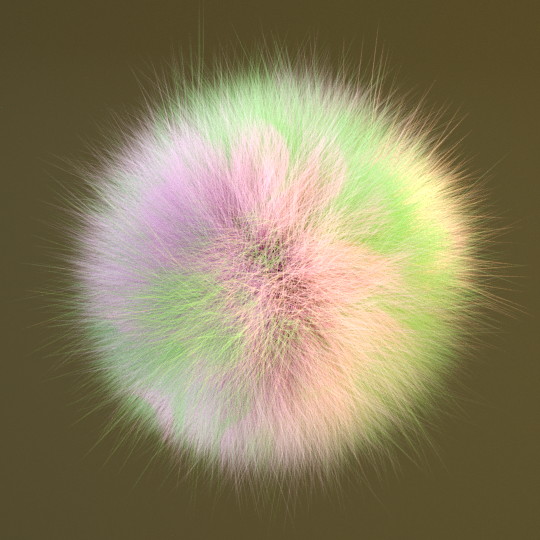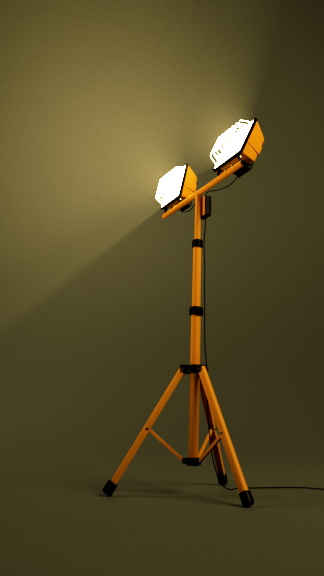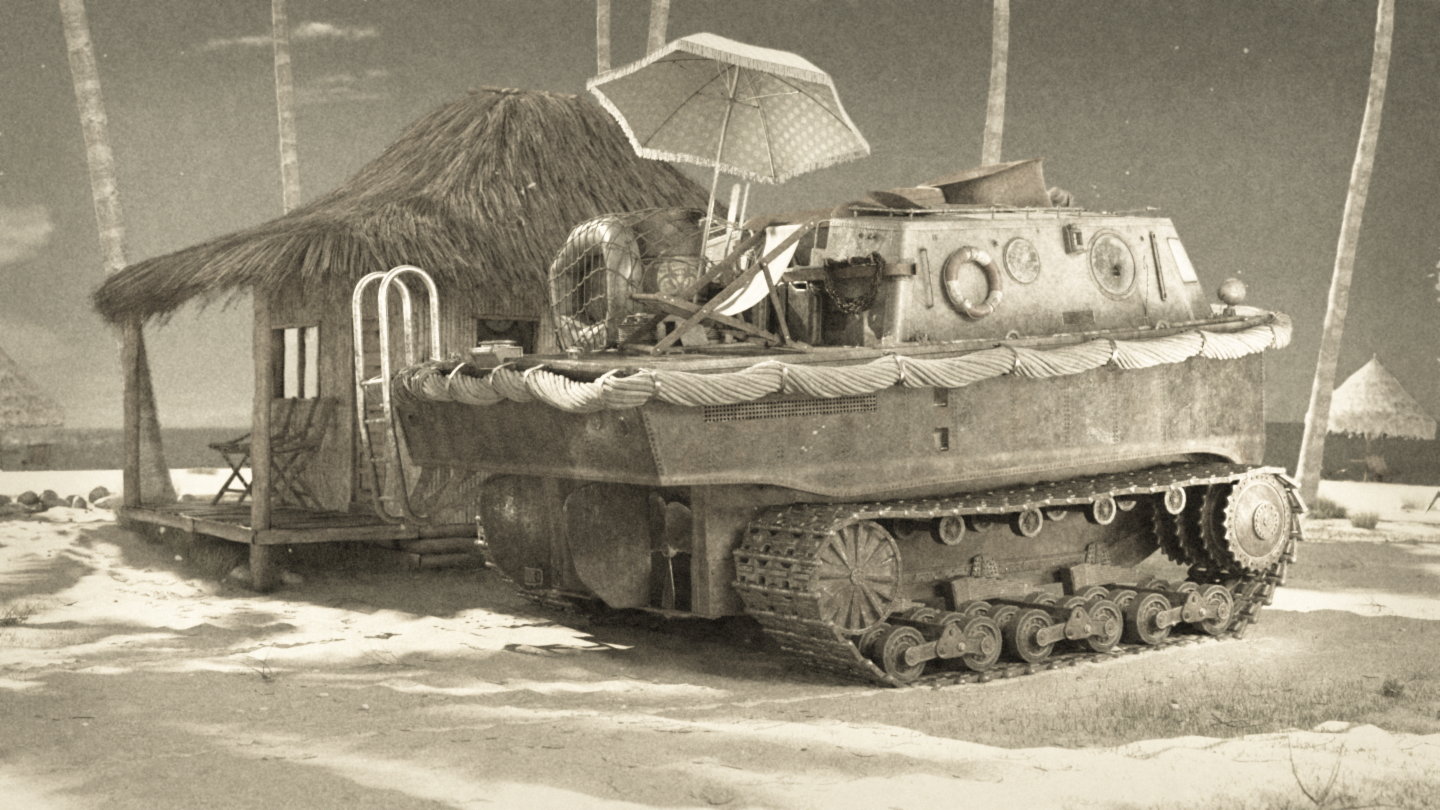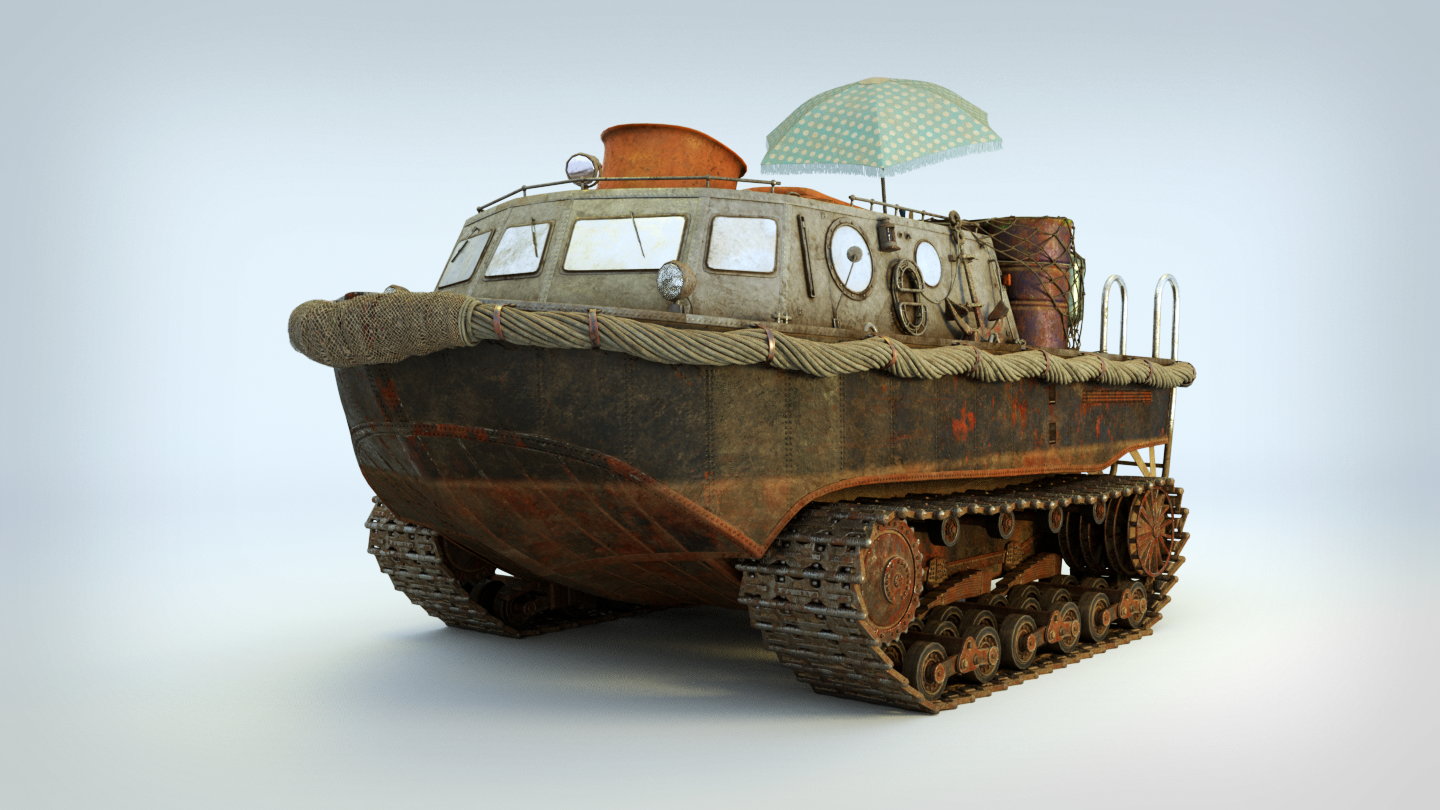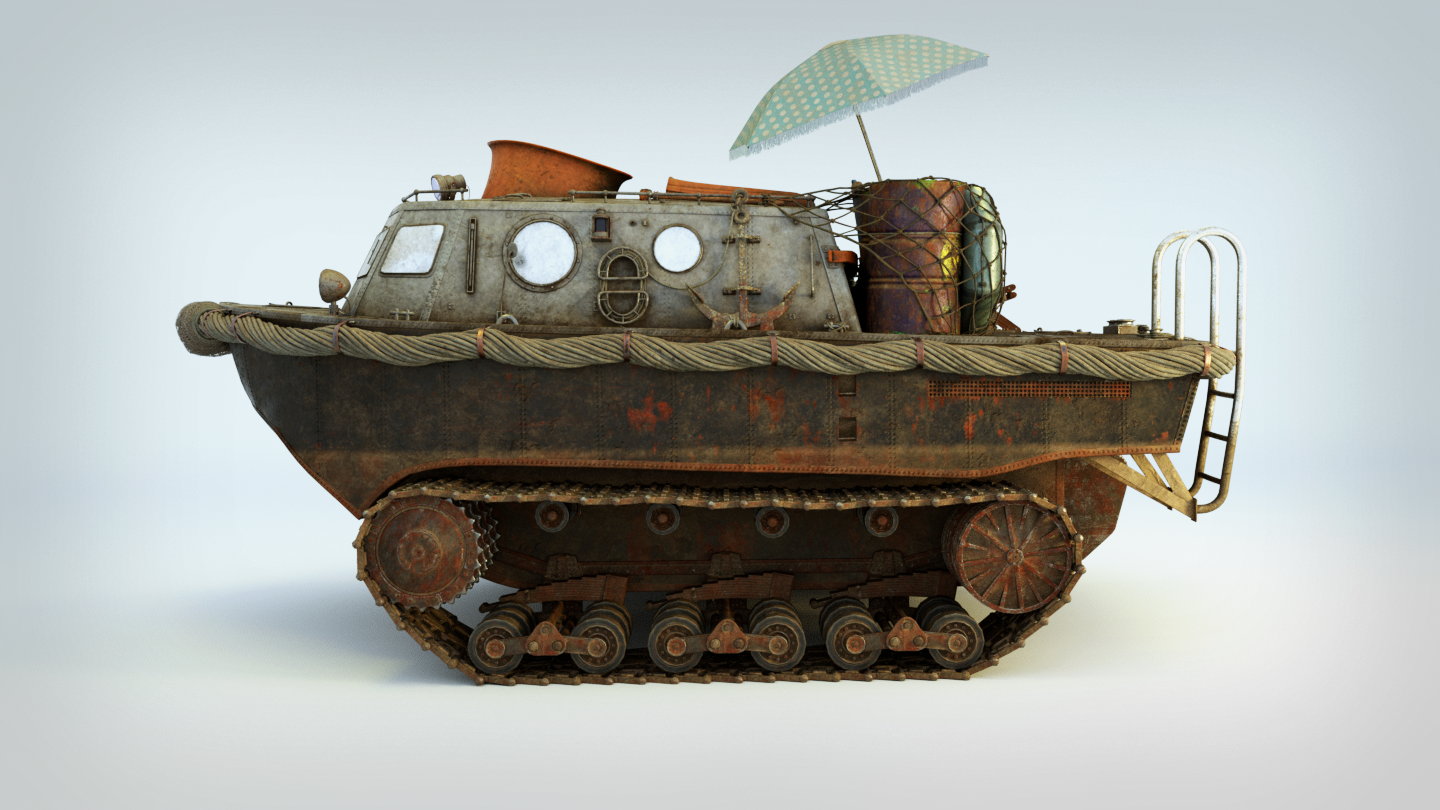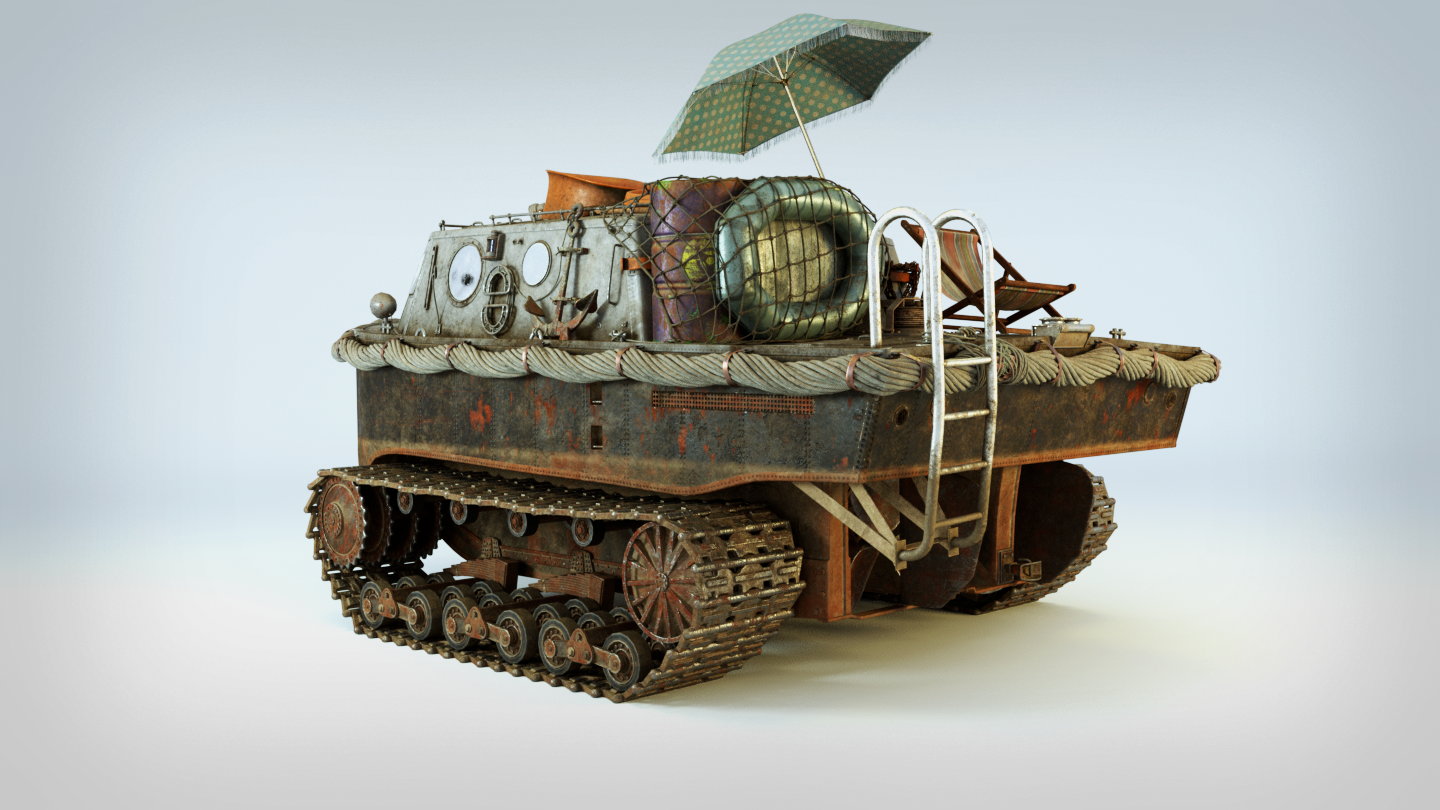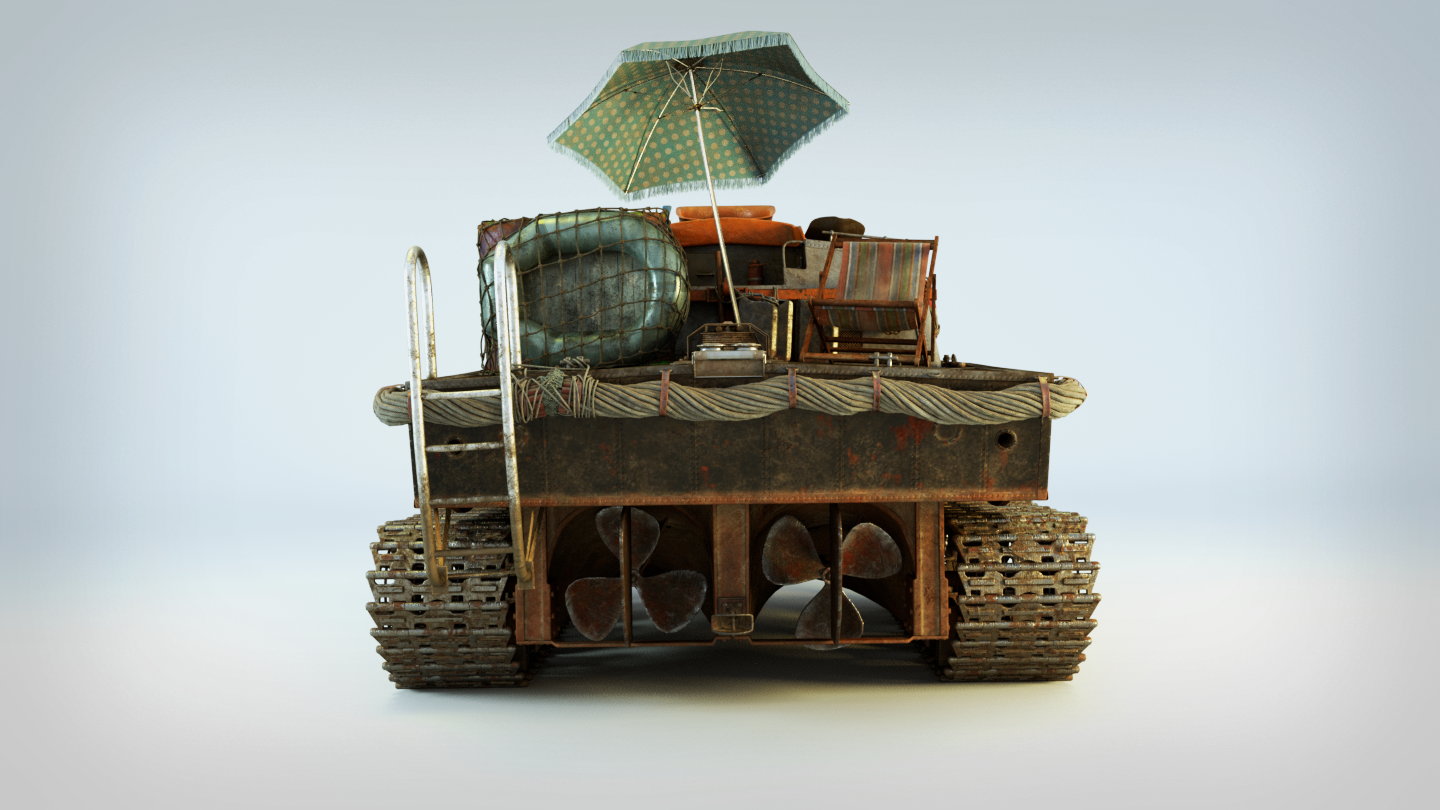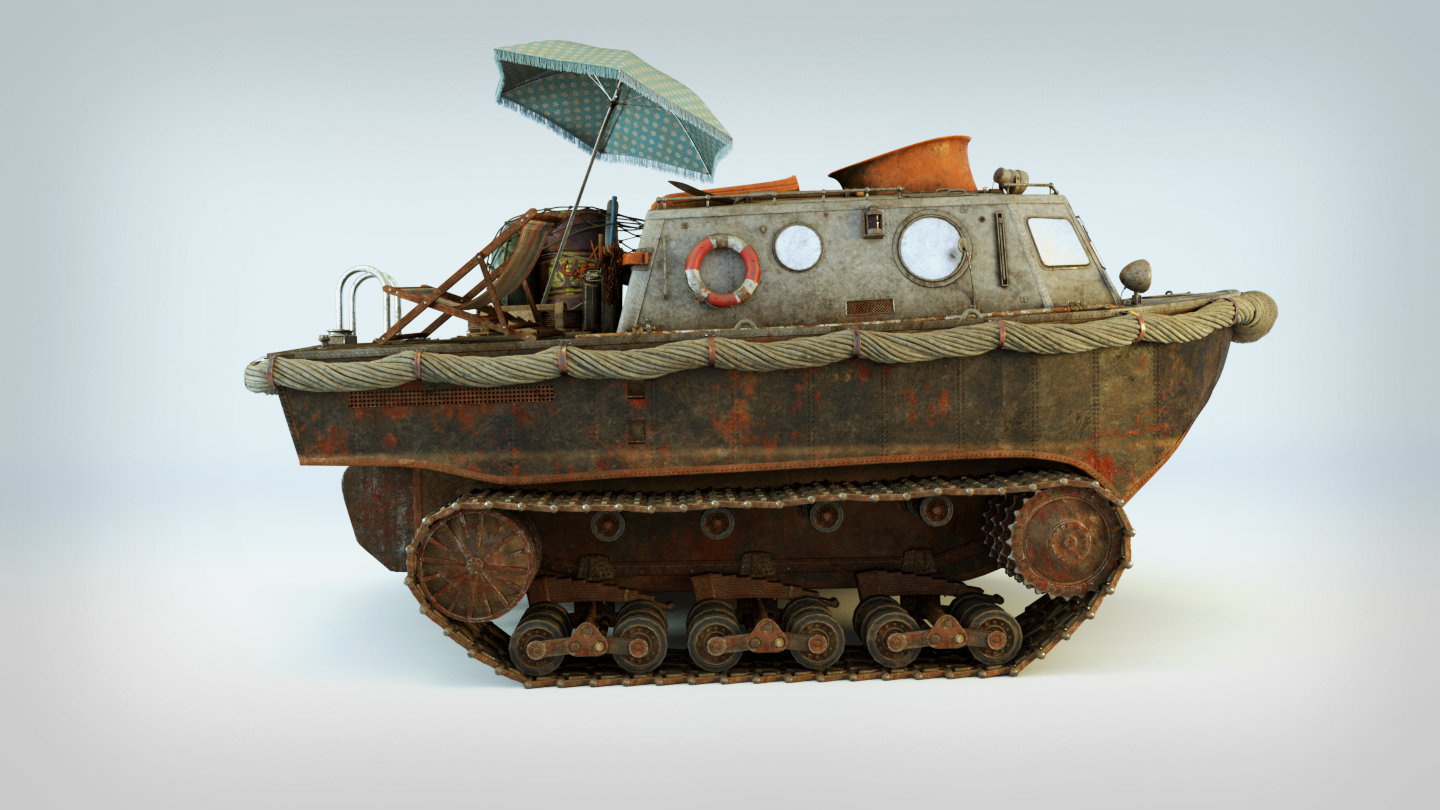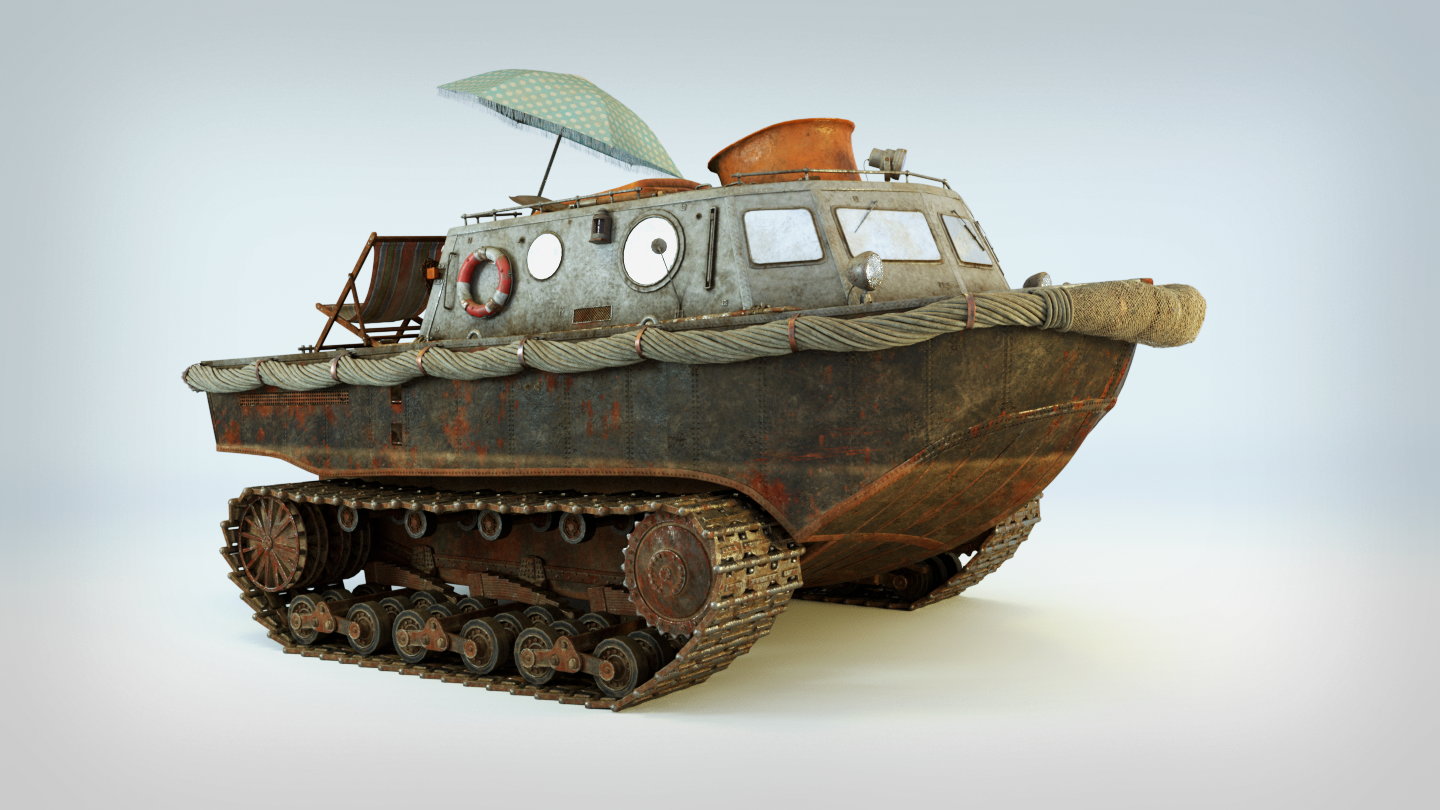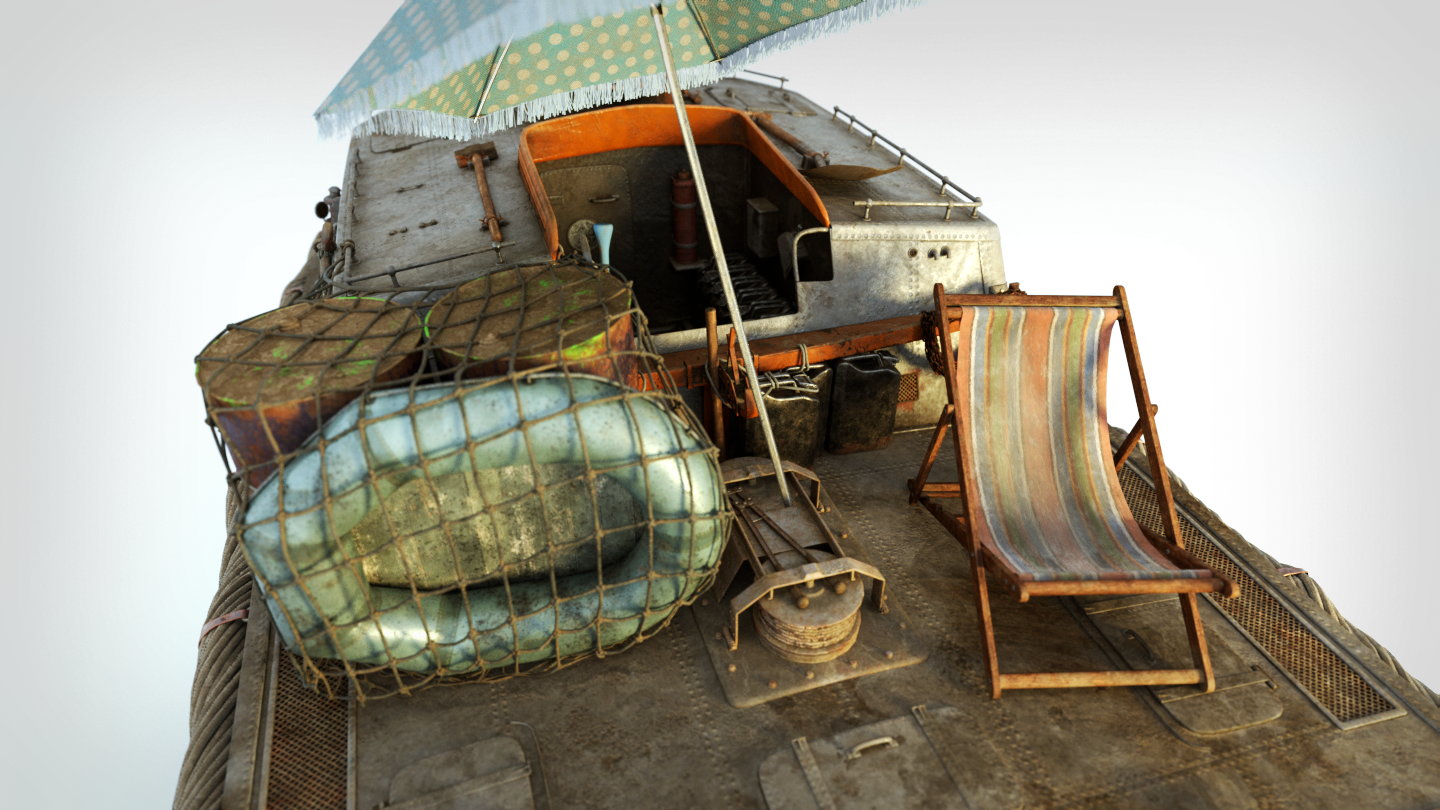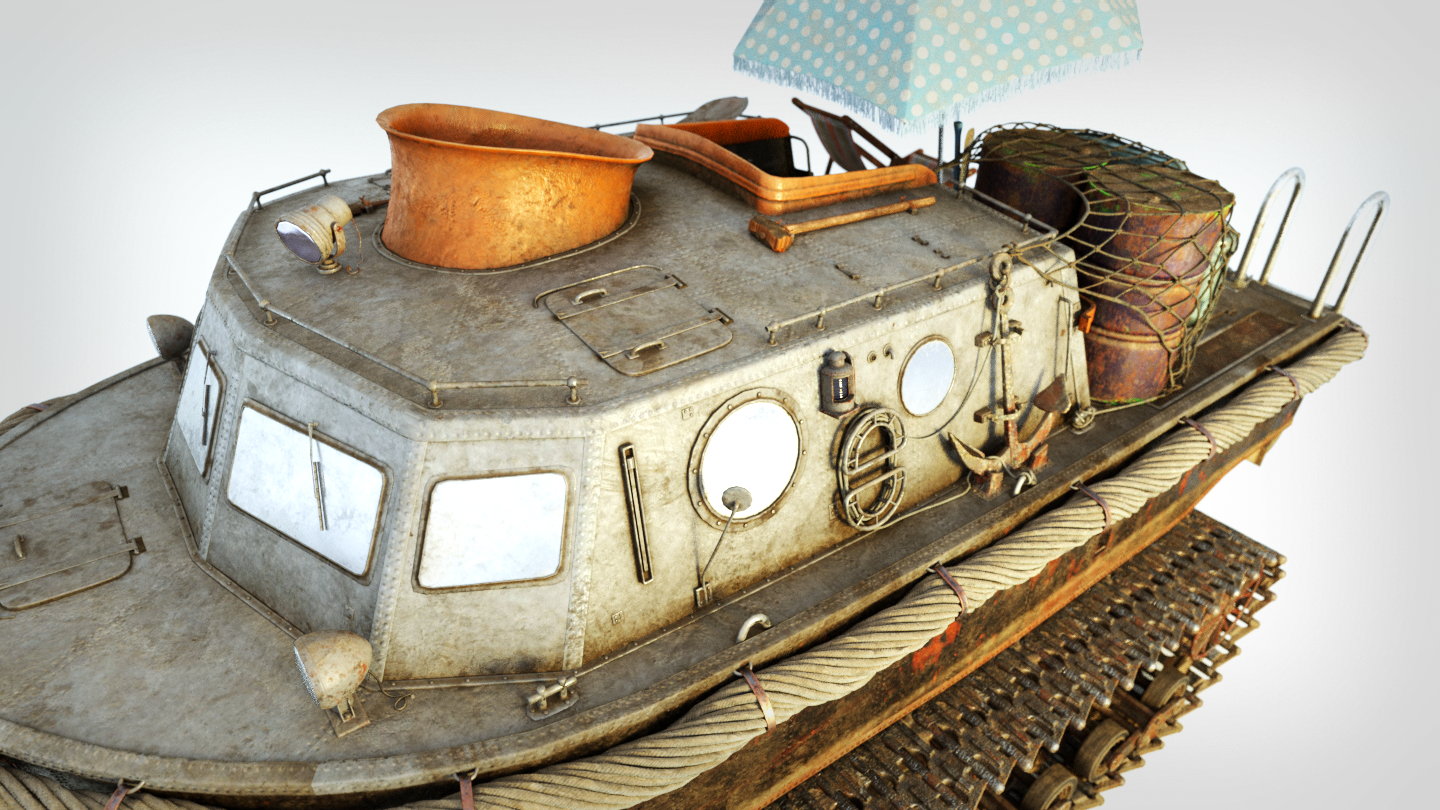The underwater city of Rapture has always fascinated me ever since the game Bioshock was released in 2007. I instantly fell in love with the atmosphere, storytelling, game play, art and sound style and how things are broken and falling apart.
The commercials in the game are presented in a very unique way, making a really weird thing look commonplace and natural. Like putting a person on fire by snapping your fingers or sending a pack of bees on somebody.
Then Bioshock 2 came with even crazier plot twists, action and wtf-just-happened moments. I still remember the feeling in my gut when I saw Gilbert Alexander in the tank the first time.
This is the Big Sister from Bioshock 2. I had loads of fun modeling this weird and interesting character with her creepy long legs and short torso and unmistakable outfit. Based on some detail renders by Blur studios.
Bioshock © 2K Games
Download .blend file.
44MB, modeling: Blender 2.79, rendering: LuxCoreRender, texturing: Substance Painter












